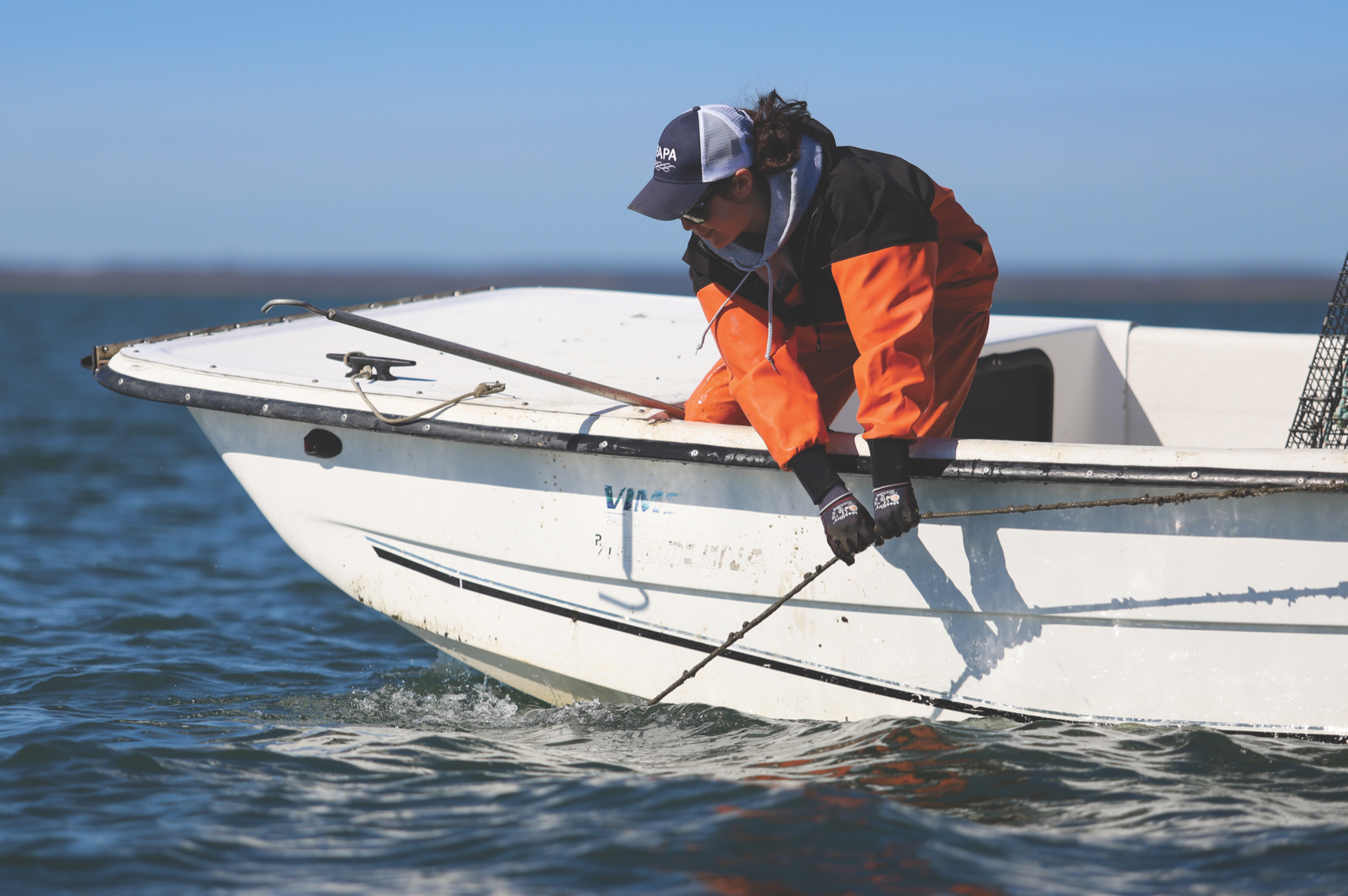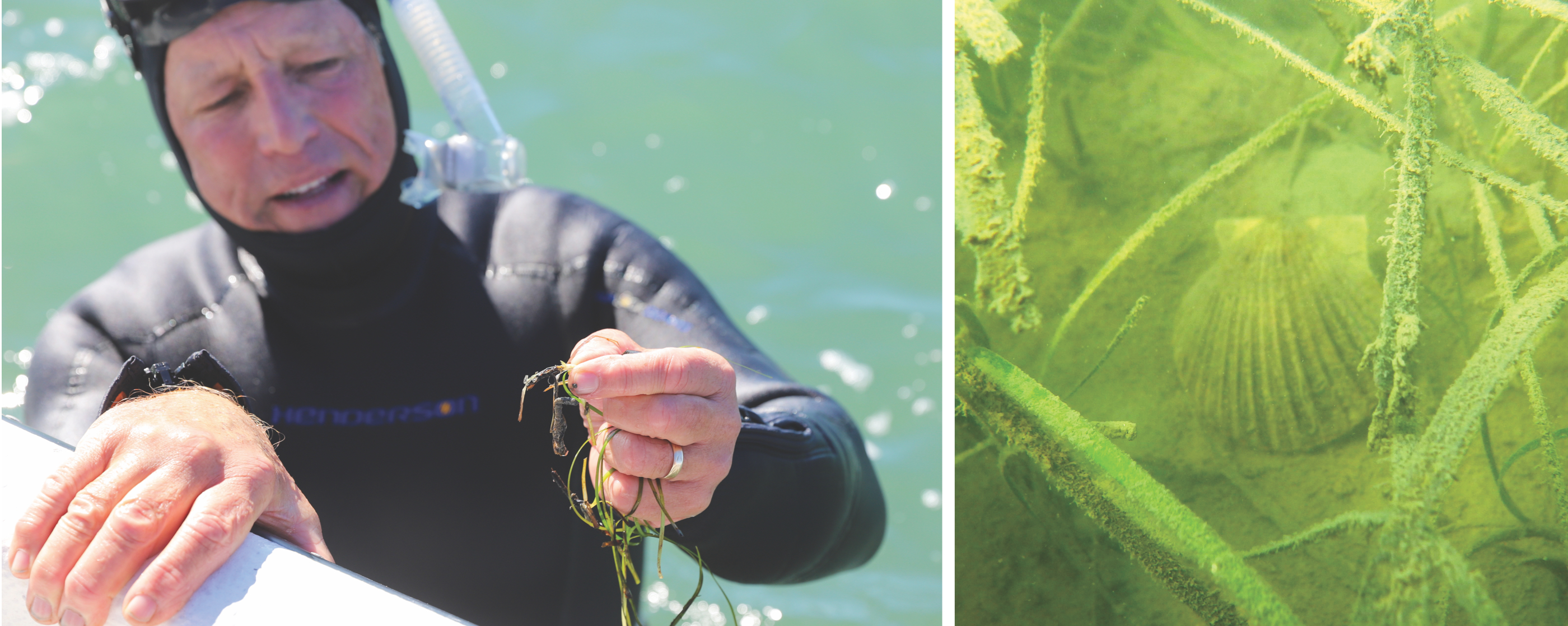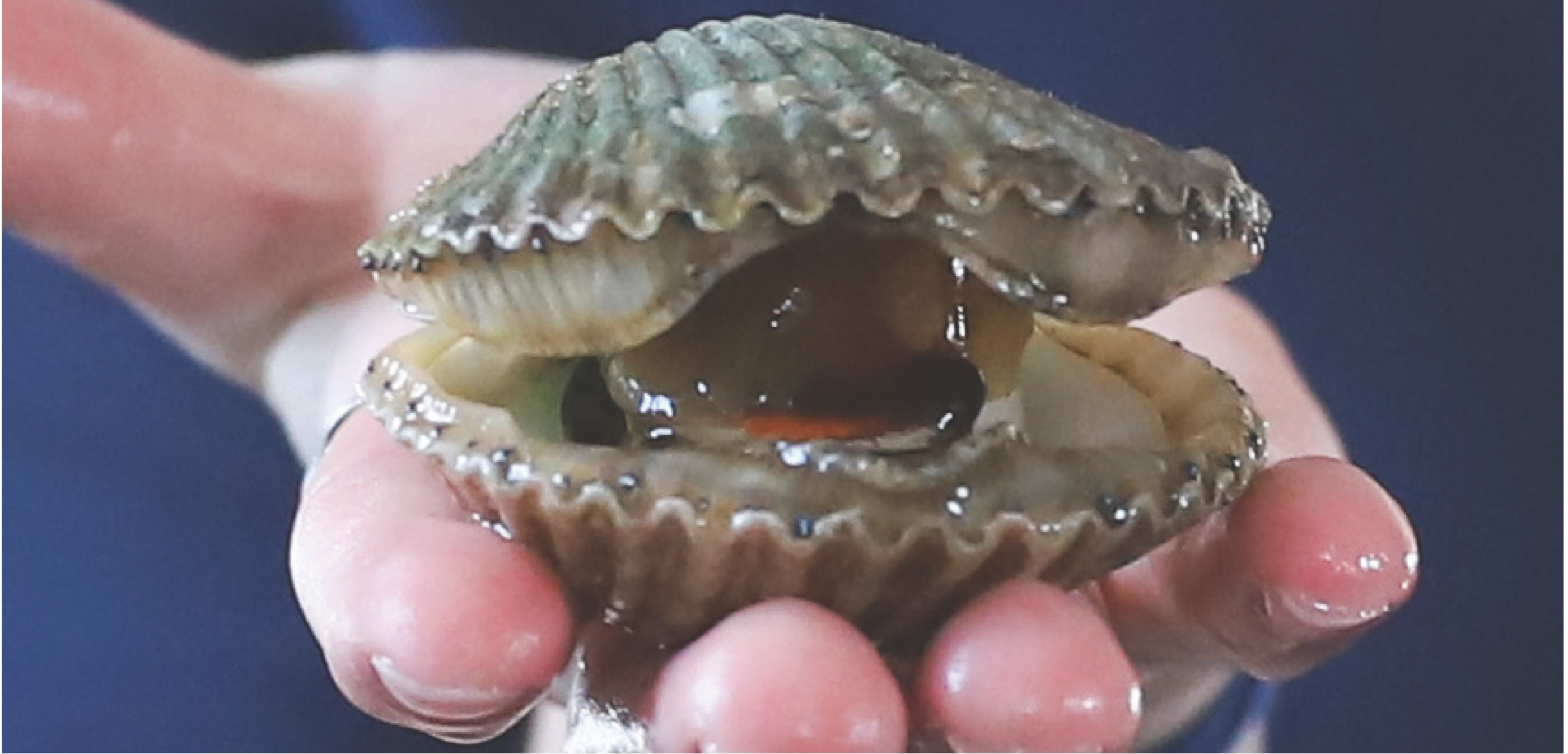In the 1930s, disease and a deadly hurricane wiped out the eelgrass that had flourished in the shallow bays along Virginia’s Atlantic coast. The abundant bay scallop population, deprived of its habitat, collapsed as well. The coastal waters lay barren for decades.
Then along came a gardener.
Beginning in 1999, Professor Robert “JJ” Orth of William & Mary’s Virginia Institute of Marine Science (VIMS) organized a team of colleagues, students and citizens to sow eelgrass seeds along Virginia’s coastal bays and lagoons — a novel method of undersea gardening Orth had pioneered in Chesapeake Bay.
“From the 72 million seeds we’ve put into individual plots, the plants that have survived, grown, flowered and produced their own seeds have spread, contributing to the 9,000 acres of seagrass we have today,” Orth says.
Those 9,000 acres represent 75 percent of the world’s restored seagrass — the largest single example on the planet. “In 20 years, we’ve done something that no one has ever seen before in terms of the scale of the project and the rate that these plants have spread,” Orth says.
“I’ll never forget one of the first times going with JJ to collect seeds. You stepped out of the boat onto mostly bare sand,” says Laura McKay, manager of the Virginia Coastal Zone Management Program (CZM) at the Department of Environmental Quality, which has helped underwrite the restoration project since its inception.
“Going out years later, you’d jump overboard and it’d just be a sea of squishy spaghetti under your feet — eelgrass was everywhere!”


